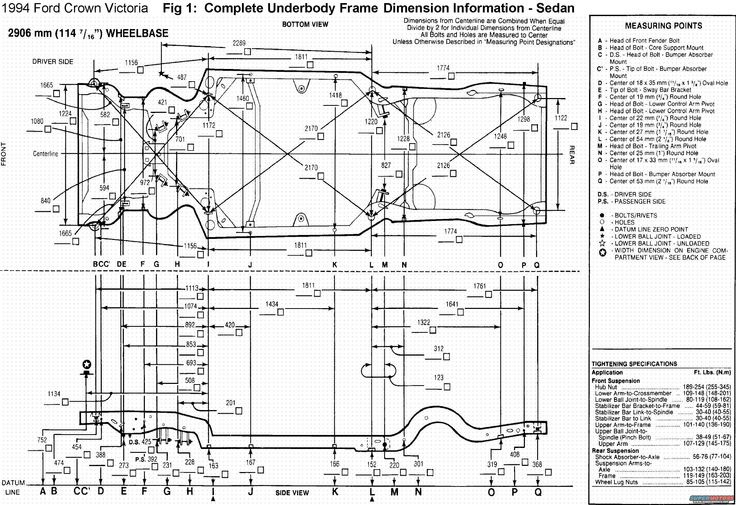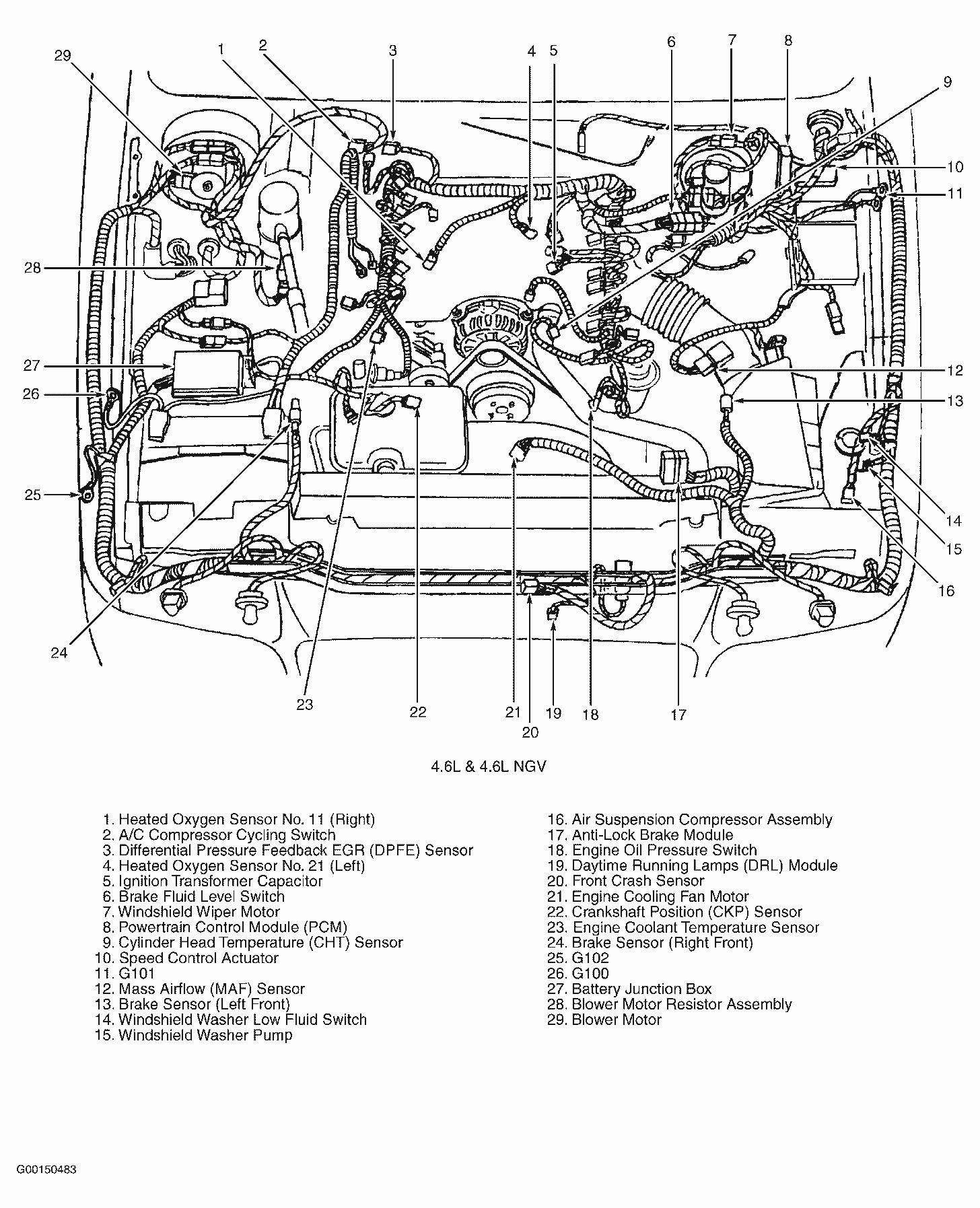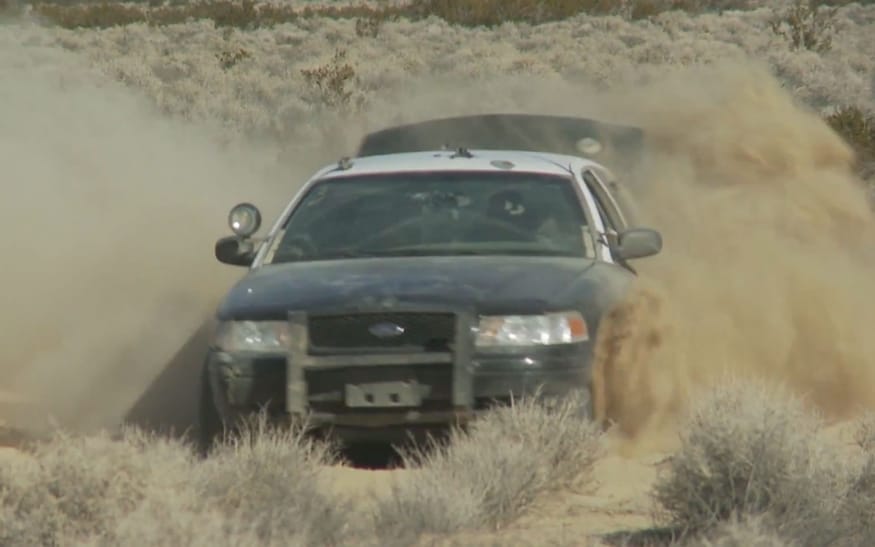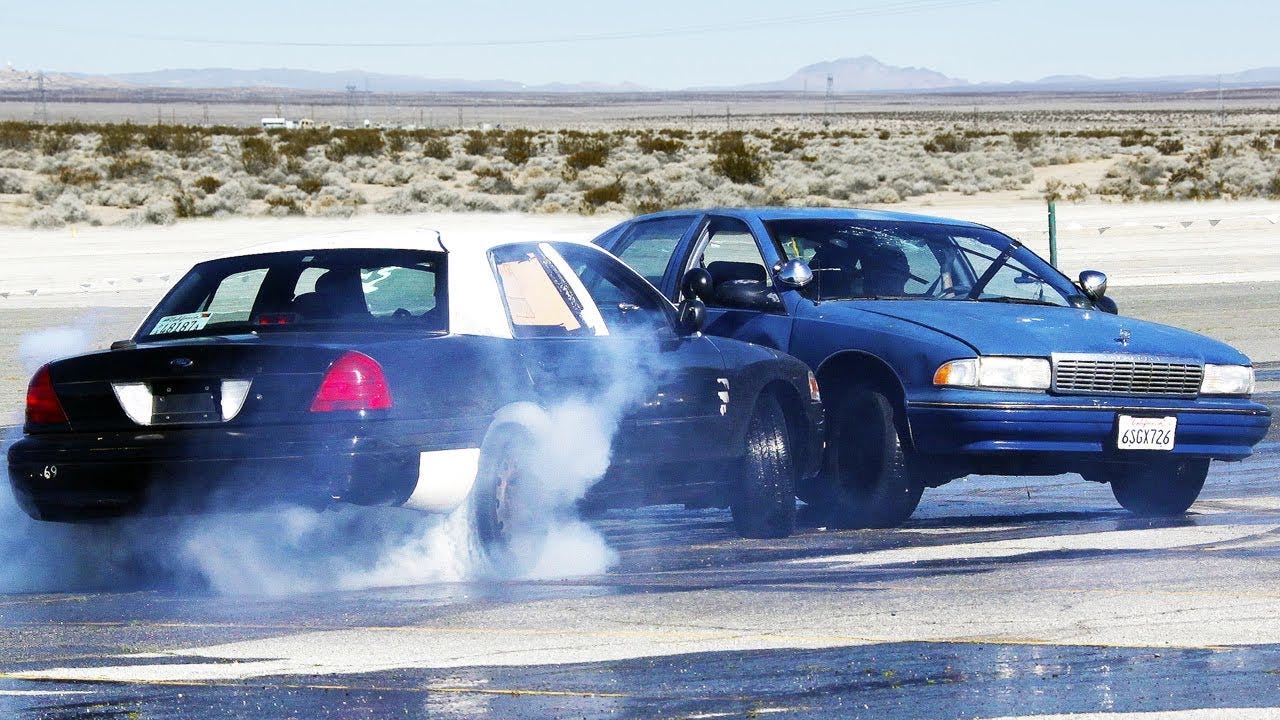Does The Ford Panther Platform Have A Design Flaw In Terms Of Handling?
Is it just me, or was the handling of my Mercury Grand Marquis particularly bad?
As some of you know, I drove a 1998 Mercury Grand Marquis for almost 2 years, and things just didn’t really work out. Though this is most likely because it was a poorly optioned car, and if it have had more comfortable seats I wouldn’t have minded neatly as much as I did. However, in my time driving the car through the snow and ice, as well as in general. I just noticed how poorly it seemed to handle, it was like the car just couldn’t make up its mind on where to go in some cases.
Now, I know that large sedans aren’t usually the best handling cars. But in comparison to the Buick and the Chrysler, it seemed like it handled the worst out of all 3 of them, leaving the only car that handles “worse” being the Lincoln, a car which weighs another 1000 pounds. So, I’ve been wondering for a while: Is there something wrong with the Ford Panther body platform the causes it to handle particularly badly? Or was I just not used to the car? Let’s find out.
I’m going to be looking specifically at the aero style cars that ran from 1992-2012. And I’m only looking into the handling of the car, power and speed is not what I’m concerned about here. For starters, generally the hierarchy goes in order of brand- Ford Crown Victoria, Mercury Grand Marquis, Lincoln Town Car, from lowest to highest respectively. The Crown Vic and Grand Marquis are extremely similar, aside from a few things like leather quality and badging, and they share a massive number of parts both inside and out.
They also share very similar trim levels, given different names depending on year due to Ford later deciding there should be no "base model" of a car- a Crown Victoria base model equates to a Grand Marquis GS, the Grand Marquis LS is a Crown Vic LX, and later years with the 'super extra special' trim equate out to the Crown Vic LX Sport and the Marquis LSE/LS Ultimate. The late-to-the-party Mercury Marauder in 2002-2004 included rack-and-pinion steering, heavier-duty brake and suspension components from the Ford Crown Victoria Police Interceptor. But, the Marauder is also a whole different animal, and we’re talking about the everyday car you see on the street.
In this episode of Roadkill that aired back in 2012, a “scientific” comparison was done between the Chevy Caprice 9C1 or the Ford Crown Victoria Police Interceptor P71 to see which car was better in different categories. I know that they say otherwise in the episode, but during the off road race at the end, it seems that while the caprice has better overall control than the crown vic does. Despite it having slightly worse tires and running a longer time, though this could just be a trick of the camera footage.
I’ve just been comparing the 1998 Panther body car to the 1994 GM B-body car that I currently have, as I feel that is the best comparison. And I feel that tires are a large contributing factor, as the tires on the Grand Marquis weren’t very good (It was more the case they just weren’t bad enough to warrant being swapped over), but I got new tires for the wagon right after I bought it, because 2 of the current ones had gone flat.
Originally, the Grand Marquis I had came with 4 new snow tires, which I never put on (A bad decision in hindsight). All 4 tires were thankfully small enough to all fit in the trunk next to each other, I did this in hoping that it would give me some more grip in the winter due to the weight. But looking back this also might have been a mistake, as the 200 pounds worth of wheels and tires in the back may have made it easier for the car’s back end to come around in hard braking.
As far as the frame’s of both cars go, they’re pretty similar, and the frame of the Mercury wasn’t rusty, at least not to my knowledge. Generally speaking, you would want the chassis to be as rigid as it can be for handling. The more rigid a chassis is, the more it works the suspension, and in a perfect world, you would want the chassis to be stiff with the suspension doing all the work. Also, I recommend watching the video below if you want to learn more about the panther body platform, it actually gave me some pretty good information.
Ok, so tires are a contributing factor, what else is there? Suspension is another major factor, and the less the suspension leans, the better the vehicle is supposed to handle. But can a car’s suspension be too stiff? Well…actually yes, it can. If a bump appears in the road, the springs allow the tire to move upward, without the vehicle body moving much to maintain grip. So why would a soft spring possibly allow for more grip than a stiff spring?
Well, imagine a car with no suspension at all. With no suspension, hitting a bump at any real speed will cause the car to bounce up and down violently losing contact with the ground (As well as a painful kick in the ass to the driver). It can also mean not contacting the road quick enough if there’s a drop in the road. So, the stiffer the suspension system, the harsher the ride, not unlike my dad’s old Subaru. Of course, there is a sweet spot where all of this is optimal.
On a small scale, road irregularities may not be all that frequent, but the microscopic level the road surface is constantly changing. Tires and springs will vibrate while adjusting to these small changes in surface conditions, which are made even more apparent when traveling at higher speeds. Ultimately, softer springs will adapt to road irregularities far quicker than stiffer springs, without causing a loss of contact with the road, and thus provide more mechanical grip. And in the snowy seasons, there are many more changes in road surface.
But “Hold on one moment!” you say. “Aren’t the panther body cars already rather soft handling cars?” And I would say yes, they are. But the B-body GM cars have softer riding suspension, at least mine does anyway. But my car also has the DynaRide air suspension, is there a chance that it handles bumps, gravel, and snow better than the Mercury because it has a little more travel? Well, I’m honestly not sure, while it is possible, I wouldn’t say it’s the most plausible factor. And if it WAS contributing to the lesser handling, it most likely wouldn’t be as noticeable as the tires.
As for the Mercury, most of the P71 Police Package options were available on standard Panther bodies by ordering it with the Handling and Performance package (mine did not have this), which included a rear sway bar (absent on standard cars unless optioned), the 3.27 gears (normally 2.73), dual exhaust (normally single), and a couple other options. Unfortunately, I don’t know if my Grand Marquis had a rear sway bar or not, as I didn’t check, but based on how the car had no options and was just a base model, I would say it’s unlikely.
A rear stabilizer bar would greatly help the stability and handling of a car while cornering and turning. The rear anti-sway bar tries to keep the car's body flat by moving force from one side of the body to another. In some cases, ride quality can be affected by increased transfer of shock and force to the body on bumpy roads. This is because there is now less isolation between the solid rear axle and the frame of the vehicle. In addition, any shock experienced by one side of the rear suspension will now be partially transferred to the other side of the rear suspension. This might explain the easy oversteer of the Mercury, unfortunately the Buick doesn’t appear to have a rear sway bar either, so that theory is out the window.
Well, what about the rear axle? In general terms, a live axle or beam axle is stronger than a IRS or IFS (independent rear and independent front). This is because on a live axle the axle shafts do not have a hinge to allow wheel movement. They are one solid piece from the differential to the flange. Of course things get complicated if the live axle is a front axle, because now the wheels have to turn. Generally a solid piece of steel does not want to bend repeatedly.
But as far as I know, the Buick also has a solid rear axle. And as far as limited-slip rear differentials go, neither car had one. Now that we have currently gone through all the major suspension components, what else if left? It seems I might just have a personal bias for one car and not the other. But, what if what I’m looking isn’t actually in the suspension system, but in the steering system?
After thinking outside the box a little more, and checking some online forums. Apparently, there is very little "self steer" in the steering for the panther body cars when you start to go sideways (when they are stock.) Now, I'm not some super drifter, but I know my way around saving a slide. My other cars have more "self steer" when the rear end starts to go and it makes catching oversteer much more easy. Because of the boosted power steering, the wheel wants to go back to the middle more quickly.
In contrast, the old Marquis I drove had a fantastic tendency have the power steering go back to the middle too quickly causing snap-oversteer depending on the corner (It’s possible that it had a power steering problem when I think about it more). I had no problem retaining more control in the other cars and transferring back and forth between left and right slides. Though, I more or less trust the guy who I heard this from, but it makes some sense in my head. For anyone unclear on what i'm talking about, the "self steer" i'm referring to here is the tendency for the front wheels to "find" the correct counter-steer angle during a slide.
However, It seems that there were three different steering gear assemblies used on for the panther bodies. I have no honest idea of which one my Mercury had, but there was the regular one, and two others with more "road feel" and feedback. Here is a quote from the P71 site; "All 1997-2002 Crown Victoria’s use steering gears that are visually identical to each other on the exterior. However, the thickness of the torsion bar inside them varies according to application. A stronger torsion bar yields increased "road feel" and increased turning resistance. Performance minded individuals will want either STG-35 or STG-36." The STG-35 came with the "Handling Pkg." option and the STG-36 came with the Police Interceptor Pkg.
One factor I also should put into account is time, the Mercury Grand Marquis was the first RWD car I had ever owned, so I would felt different to drive in general anyway. As before a drove a small FWD Oldsmobile, so there’s a possibility that maybe as time went on, I developed better knowledge on how to drive a RWD car. And by the time I changed cars, it automatically felt more familiar. Harsher seats will always give you a harsher ride as well, so the Mercury would have always felt worse than the Buick just because the Buick seats were so much more comfortable than the Grand Marquis seats.
As for my opinion on the panther body cars themselves. I’ve heard lots of good things about them, and I believe that they were good cars for the most part. Of course, that doesn’t mean you should act like a dick driving around in a black and white decommissioned P-71 Interceptor with two spotlights and a push bar, driving with one hand as you flip people off with the other thinking about playing copper on the freeway and imagining cars parting before you like Moses crossing the Red Sea. Though you could apply this same logic to any recently decommissioned police vehicle.
For "performance", most people realize that an eighteen-foot-long, forty two hundred pound sedan with one of the laziest V8s to ever roll off a Ford assembly line will not ever be considered fast without aftermarket modifications. Not to say that my Buick is a fast car either, even with the LT-1 it still takes just over 8 seconds to go from 0-60 MPH, which is only a little quicker than the grand marquis was.
As for the conclusion, I look at it this way: The 1998 Mercury Grand Marquis I had just happened to be a bit of a dud. The Mercury had mediocre tires with extra weight in the back, giving a much higher chance of oversteer and understeer in general. Couple that with more firm power steering that I’m not very used to, with my lack of experience at the time. Not to mention the awful seats that would make every bump feel worse than it actually is, with possibly more firm suspension. And you have one poor handling/riding Grand Marquis.
Both the GM B-body and Ford Panther Body have their positives and negatives. I personally prefer the GM cars because I like the bigger engine and the better turning circle, I’m more partial to GM designs as well, but that’s just a personal bias. If you’ve ever had any experience with either car’s in terms of handling, feel free to tell me about it in the comments, as I’m interested to hear what other people have experienced with these platforms. And you own a Ford Panther Body car, I found an old article/study by an anonymous writer on how to make there cars handle better - https://www.crownvic.net/tech/Handling.htm












